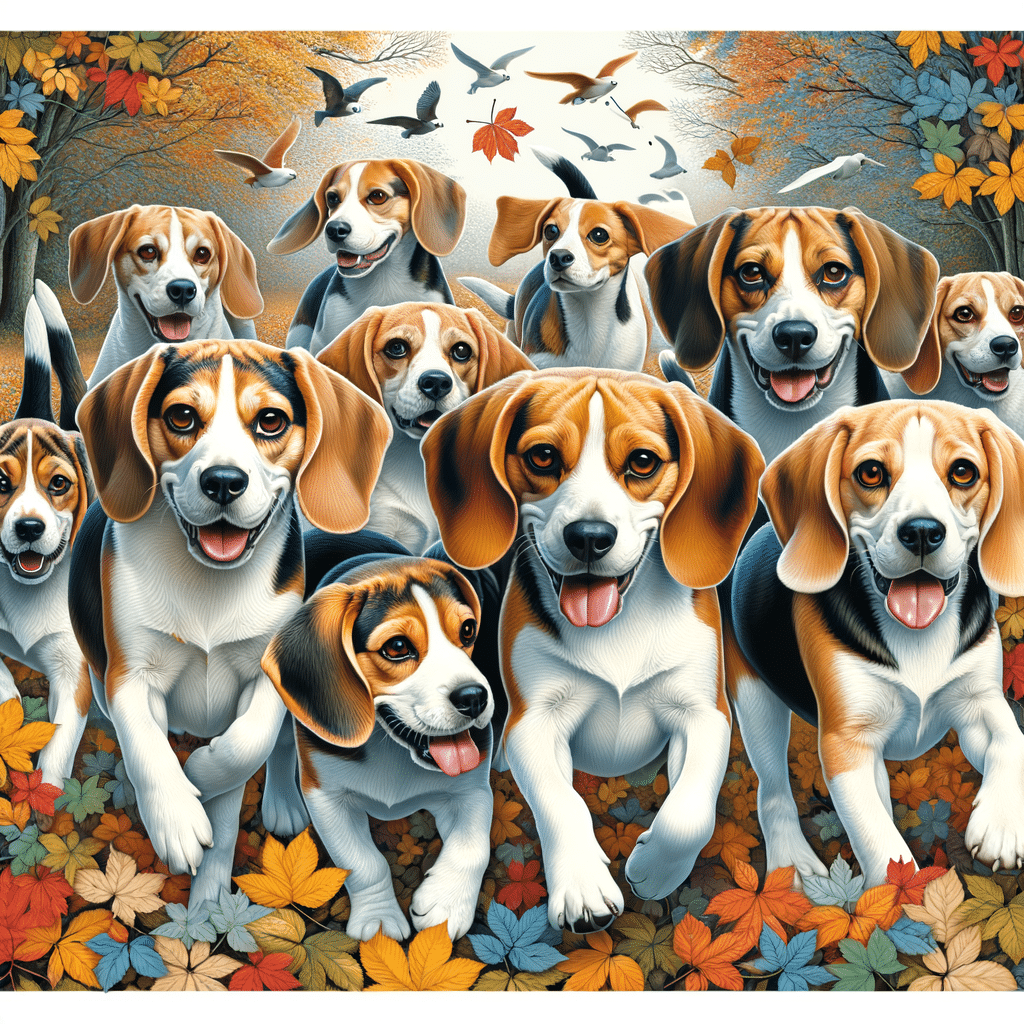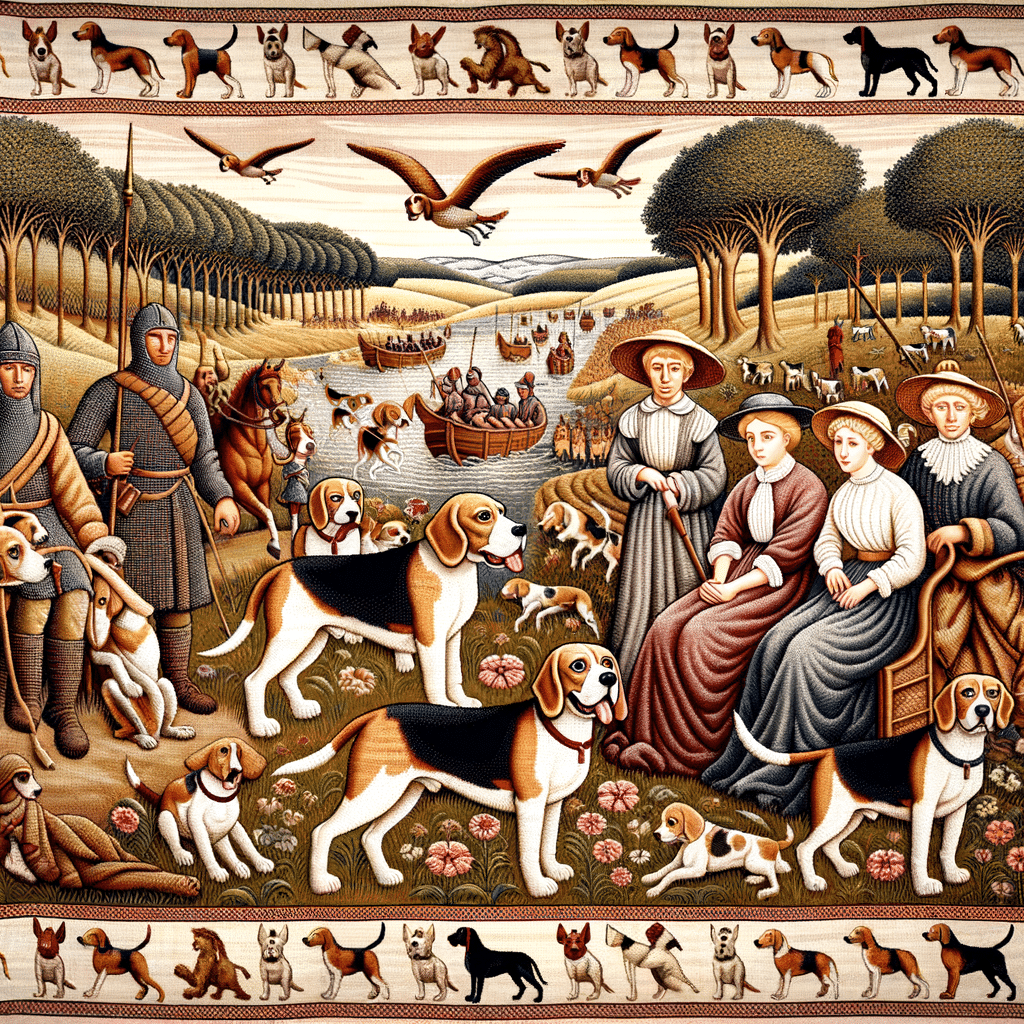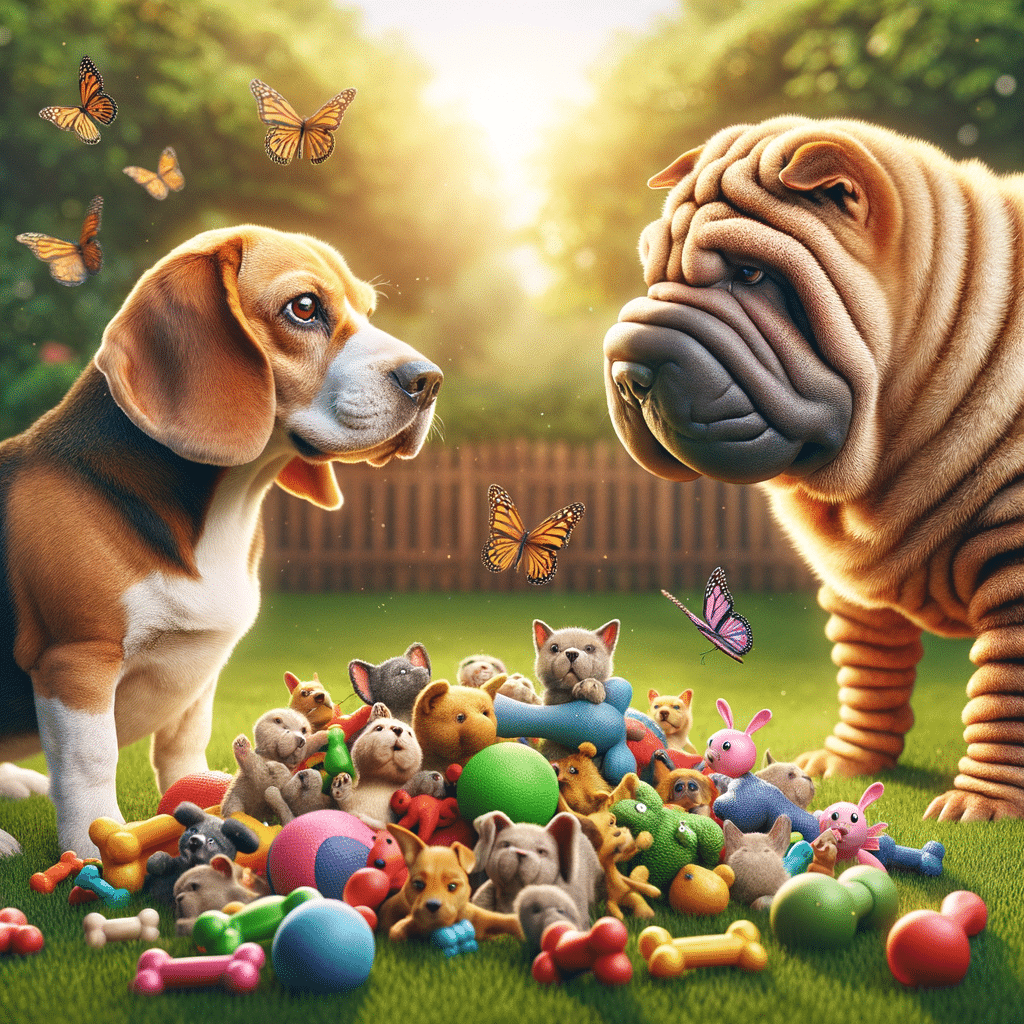Choosing the right dog breed is a significant decision when considering adding a furry addition to your home. Two popular breeds often come up in the conversation: the beagle and the pug. Each breed comes with its unique set of characteristics, history, and care needs.
In This Article
When deciding on beagle vs. pug, comparing characteristics can give you the insight you need to make the perfect choice. Beagles have a joyous disposition, require medium maintenance, and deliver suitability for active families. In contrast, pugs have a warmhearted personality and steadier energy levels, requiring higher grooming attention than beagles or other dog breeds.
Understanding these breeds’ origins is key to appreciating their traits today. Beagles originated as hunting dogs, which explains their heightened sense of smell and need for regular activity. Pugs, with a history as companion animals in Chinese and European royal courts, have a friendly nature.
Although both breeds share loving qualities, making them excellent with children and new owners, their physical and temperamental differences are distinct. The beagle stands slightly taller and is generally healthier, while pugs, with their characteristic flat faces, may encounter specific health issues.
Choosing between a beagle and a pug ultimately depends on matching the breed’s traits with the owner’s lifestyle, space, and capacity for pet care. You must weigh factors such as energy levels, grooming needs, and potential health considerations to ensure the right fit.
Highlights
- Beagles and pugs have distinctly different histories influencing their present-day characteristics.
- Physical and temperamental traits vary between beagles, which are active and low shedding, and pugs, which are affectionate but require more grooming.
- Choosing the right breed entails considering activity levels, grooming needs, and health prospects in relation to family life.
Breed Origins and History
This section explores the intriguing histories of the beagle and pug breeds, tracing their origins, breed evolution, and growth in popularity, as well as highlighting some of their notable historical figures.
Beagle History
The beagle is a breed that originated in ancient England. They were primarily developed for hunting small game such as rabbits and hares, with references to similar small hounds dating as far back as the Roman conquest of England. Over the centuries, the beagle evolved, with the modern breed being refined in the 19th century.
Pug History
Originating in China, pug dogs have a history as treasured companions of the Chinese imperial family. Emperors loved these popular dog breeds for their sociable nature and distinct appearance. The breed later came to Europe through Dutch traders, which cemented its popularity among European nobility.
Breed Evolution and Popularity
The American Kennel Club officially recognized the beagle in the early 1880s. In America, they continued their role as hunting dogs and became popular family pets due to their friendly disposition.
The pug’s stature grew in the West during the 19th century, becoming a favored pet among European royals. The American Kennel Club recognized the breed in 1885, and its popularity has since steadily increased in Europe and the United States.
Famous Historical Beagles and Pugs
One of the most famous beagles of all time is Snoopy from the comic strip “Peanuts,” which helped to elevate the breed’s popularity further.
The pug became symbolic of the House of Orange of the Netherlands with the story of Pompey. This tenacious pug allegedly saved the life of the Prince of Orange by alerting him to assassins.
By understanding the deep-rooted histories and the cultural significance behind these breeds, enthusiasts and potential owners can appreciate the beagle and pug beyond their physical and temperamental traits.
Physical Characteristics and Appearance
When comparing the beagle and the pug, distinct differences in physical characteristics are apparent. Their size and weight, grooming needs, and coat types are contrasted by their notable features and range of color variations.
Size and Weight Comparison
The beagle typically stands between 13-15 inches in height and weighs around 18-30 pounds. In contrast, the pug is smaller, usually 10-14 inches tall and weighing 14-18 pounds. Both breeds have a sturdy appearance, but the beagle is often more elongated while the pug is compact.
Coat Types and Grooming Needs
Beagles have a short, dense coat that is weather resistant and requires little grooming. Regular brushing is often enough to minimize shedding. Pugs have a smooth coat but are known for heavier shedding, thus necessitating a more consistent grooming routine to manage the loose fur.
Both breeds benefit from regular nail trimming and ear cleaning, but the pug may need additional wrinkle cleaning to prevent skin infections.
- Beagle: Short coat, low grooming needs, moderate shedding.
- Pug: Smooth, short coat, higher grooming needs, heavy shedding.
Notable Features
Pugs are distinguished by their large, round eyes and deep wrinkles, particularly around the face. Their short muzzles are another defining feature. Beagles are recognized for their soulful expressions and long ears, which hang close to their cheeks. Both possess a robust body, but the pug’s is more square, while the beagle has a longer torso.
- Beagle: Long ears, expressive eyes.
- Pug: Wrinkled face, short muzzle, round eyes.
Color Variations
Beagles are commonly found in a black, brown, and white tricolor pattern, but they also come in other variations like red and white or lemon and white. Pugs typically sport fawn, black, or silver coat colors with a distinctive black mask. The range of colors for both breeds is breed standard-specific and can vary.
- Beagle: Tricolor, red and white, lemon and white.
- Pug: Fawn, black, silver, with a black mask.
Temperament and Personality Traits
When considering a beagle or a pug, their distinct temperaments and personality traits are central to understanding their suitability for various homes and lifestyles.
Beagle Characteristics
beagles are known for their joyful and adventurous nature. They have high energy levels and intelligence, making them keen explorers and inquisitive playmates. Their friendly demeanor often means they are sociable with people and other animals, but they can showcase a stubborn streak, which may require patient training.
Pug Characteristics
pugs are easily recognizable for their affectionate and loving personality. They tend to have an average energy level but are still playful, demonstrating warmth and sociability towards their families. Although not as stubborn as beagles, pugs can be steadfast in their behaviors and are less prone to wandering due to their less independent nature.
Interaction with Family and Other Pets
Both beagles and pugs are family-friendly dogs. They enjoy the company of children and other pets. Although beagles may have an independent edge, they are not aloof. They joyously play and interact with family members regularly.
Pugs are lap dogs, often seeking human attention and comfort. This makes them superb companions for families looking for a more social and affectionate pet.
Suitability for Different Lifestyles
Considering their traits, beagles generally fit active families well. Due to their higher energy levels, they require regular exercise and mental stimulation. Conversely, pugs are suitable for less active homes or apartments. They need moderate exercise and relish being close to their owners, which matches their lower activity requirements and affectionate nature.
Health and Care Considerations
When adopting a beagle or pug, prospective owners should be aware of each breed’s health issue situation, physical care requirements, and mental stimulation needs to ensure a happy, healthy life for their pet and companion dog.
Common Health Issues
Both beagles and pugs can have breed-specific health concerns. Beagles may be prone to epilepsy, cherry eye, and hypothyroidism, along with conditions like Chinese beagle Syndrome, which affects muscle tone and movement. They can also suffer from glaucoma or distichiasis.
Conversely, pugs face risks of hip dysplasia, corneal ulcers, and pug Dog Encephalitis, a condition unique to the breed. Patellar luxation and breathing difficulties are also common in pugs due to their brachycephalic nature.
Exercise and Activity Needs
Beagles are energetic and benefit from regular exercise to prevent boredom. They have a strong instinct for tracking and chasing, so activities that cater to these instincts are ideal.
Pugs require less exercise but still need daily activity to maintain health. Their energy levels are moderate, and they should avoid extreme temperatures, especially heat due to their risk of overheating.
Grooming and Maintenance
Both breeds should have their ears checked regularly to avoid infections. Pugs also need their facial wrinkles cleaned to prevent skin issues.
Training and Intelligence
Beagles are quite intelligent and trainable, using consistent, positive methods. They respond well to obedience training and praise but can be headstrong at times.
Pugs are smart and eager to please but may sometimes be stubborn. They typically excel with training that incorporates food rewards and affection.
Frequently Asked Questions
In this section, readers will find concise answers to some of the most commonly asked questions comparing beagles and pugs, from size and temperament to health and grooming.
What are the size differences between beagles and pugs?
Beagles typically stand 13-15 inches tall and weigh 18-30 pounds. Pugs are shorter and less heavy, with a height of 10-14 inches and a weight ranging from 14-18 pounds.
How does the temperament of a beagle compare to that of a pug?
Beagles have a friendly, headstrong nature and a high energy level. Pugs are warm-hearted with an easy-going temperament, possessing a fun-loving spirit and an average energy level, rather than high or low.
Can beagles and pugs coexist peacefully in the same household?
Both beagles and pugs are good with children and can adapt to living with other dogs. With appropriate socialization and training, they can coexist peacefully in the same household.
What are the main health concerns when comparing pugs with beagles?
Beagles and pugs have an average health status but with breed-specific issues. Beagles are prone to epilepsy and hip dysplasia, while pugs commonly face respiratory issues, eye conditions, and skin fold dermatitis with their facial structure.
What is the expected lifespan of beagle and pug breeds?
A beagle’s lifespan typically ranges from 10 to 15 years. Pugs also have a comparable lifespan, generally living for about 12 to 15 years.
Regarding care and grooming, how do beagles and pugs differ?
Beagles are relatively easy to groom, requiring regular brushing, but not needing extensive grooming routines. Pugs have higher grooming needs because of shedding and the care required for their facial folds. Regular cleaning is important to prevent skin infections in pugs.






